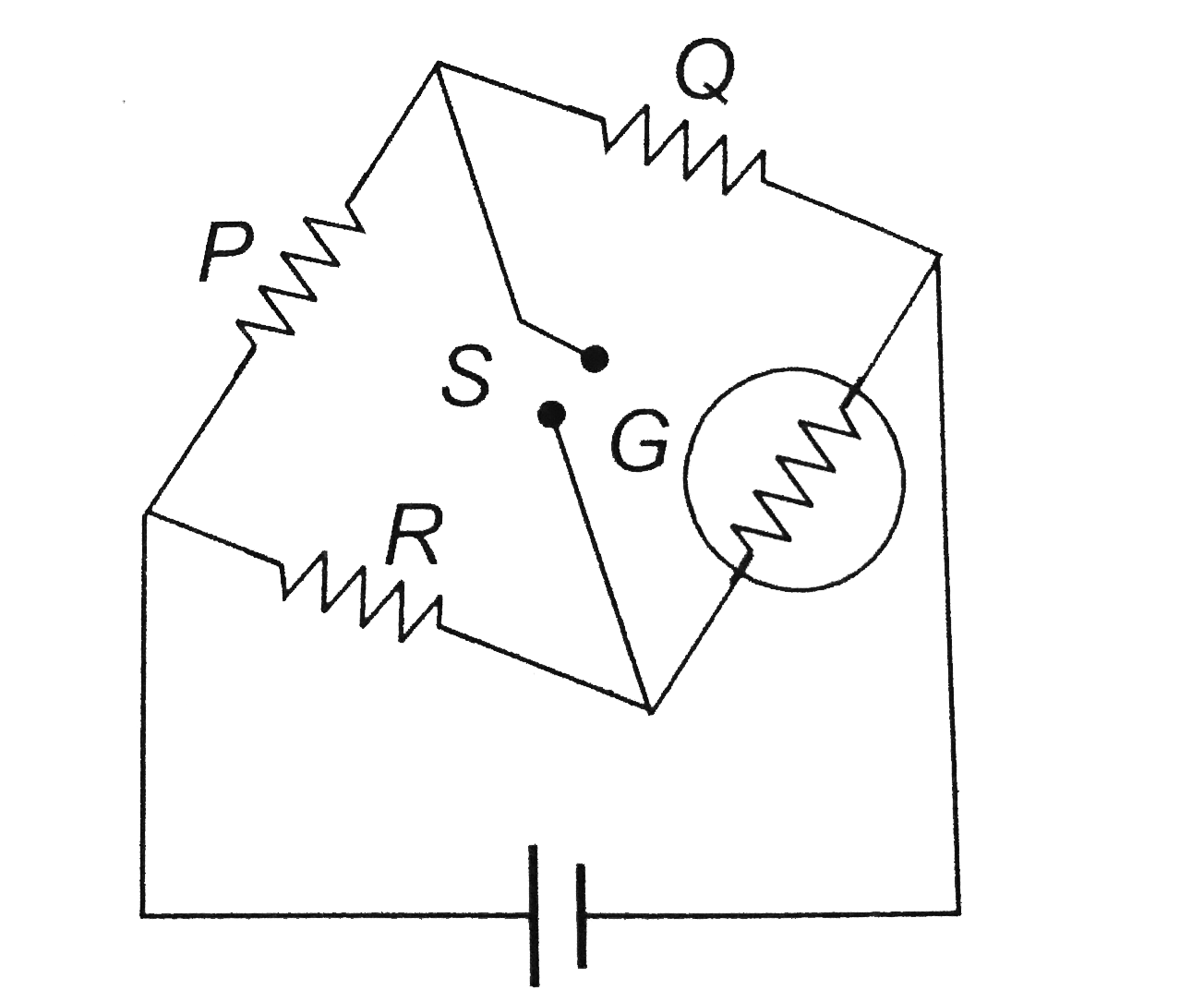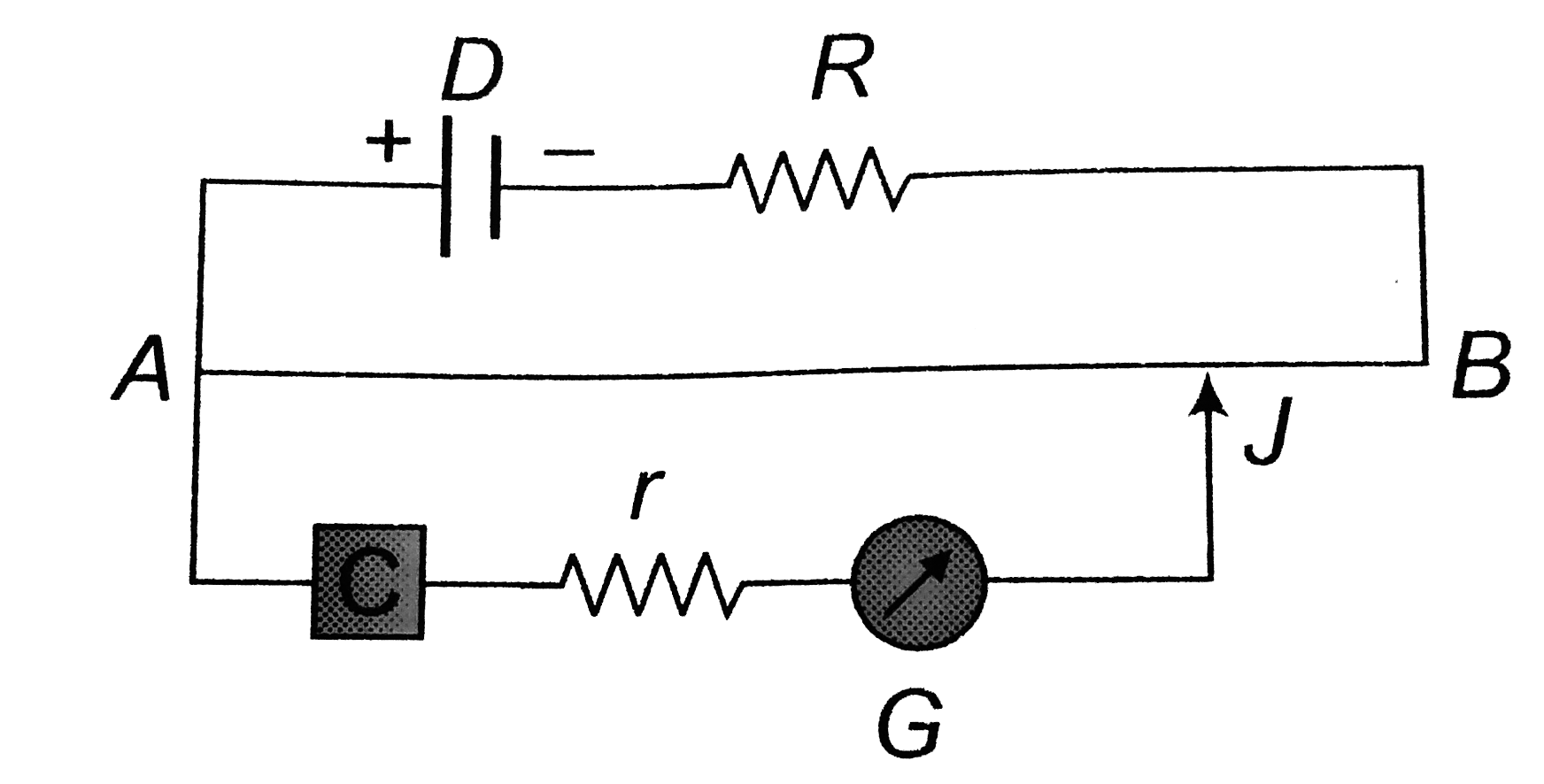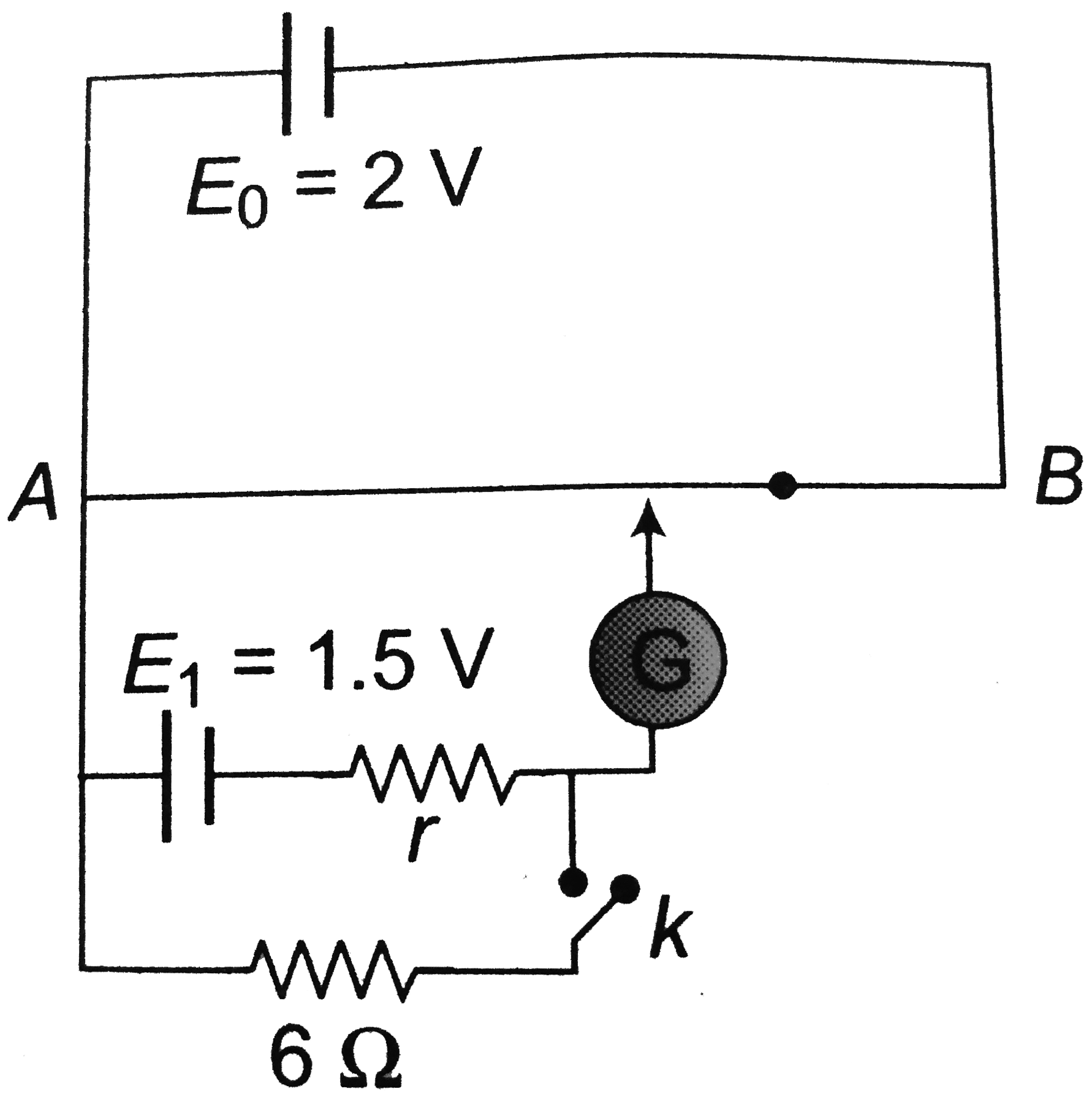Complete Solutions to Potentiometer And Meter Bridge of chapter CURRENT ELECTRICITY of Class 12 book with complete answers and questions
| Class 12 | PHYSICS |
| Chapter | CURRENT ELECTRICITY |
| A2Z | Potentiometer And Meter Bridge |
| Number Of Questions | 45 |
| Academic Year | 2023-24 |
Which of these is a False statement ?
03:40View SolutionFor measurement of potential difference, potentiometer is preferred in comparison to voltmeter because
02:27View SolutionIn meter brigde of Wheatstone bridge for measurment of resistance, the known and the unknown resistance are interchanged. The error so removed is
02:22View SolutionThe potential gradient long the length of a uniform wire is `10 "volt"//meter`. `B` and `C` are the two points at `30 cm` and `60 cm` point on a meter scale fitted along the wire. The potential difference between `B` and `C` will be
02:19View SolutionA Daniel cell is balanced on `125 cm` length of a potentiometer wire. Now the cells is short-circuited by a resistance `2 ohm` and the balance is obtained at `100 cm`. The internal resistance of the Daniel cell is
01:44View SolutionSensitivity of potentiometer can be increased by
02:23View SolutionA potentiometer is an ideal device of measuring potential difference because
02:47View SolutionFor comparing the e.m.f.'s of two cells with a potentiometer, a standard cell is used to develop a potential gradient along the wires. Which of the following possibilities would make the experiment unsuccessful gt
03:13View SolutionA battery of 6 volts is connected ot the termainals of a three meter long wire of uniform thickness and resistance of the order of `100 Omega`. The difference of potential between two points separated by `50 cm` on the wire will
02:30View SolutionIf the length of potentiometer wire is increased, then the length of the previously obtained balance will
01:24View SolutionTwo cells when connected in series are balanced on `8 m` on a potentiometer. If cells are connected with polarities of one the cell reversed, they balance on `2 m`. The ratio of e.m.f.'s of the two cells
02:14View SolutionA 2 volt battery, a `15 Omega` resistor and a potentiometer of `100 cm` length, all are connected in series. If the resistance resistance of potentiometer wire is `5 Omega`, then the potential gradient of the potentiometer wire is
02:23View SolutionA potentiometer is used for the comparison of e.m.f. of two cells `E_(1)` and `E_(2)`. For cell `E_(1)` the no deflection point os obtained at `20 cm` and for `E_(2)` the no deflection point is obtained at `30 cm`. The ratio of their e.m.f.'s will be
01:39View SolutionIn an experiment of meter bridge, a null point is obtaining at the center of the bridge wire. When a resistance of `10 ohm` is connected in one gap, the value of resistance other gap is
01:28View SolutionIf in the experiment of Wheatstone's bridge, the positions of cells and galvanometer are interchanged, then balance point will
03:31View Solution`AB` is a wire of uniform resistance. The galvanometer `G` shows no deflection when the length `AC = 20 cm` and `CB = 80 cm`. The resistance `R` is equal to.
 .00:48View Solution
.00:48View SolutionIn Wheatstone's bridge `P = 9 ohm`, `Q = 11 ohm`, `R = 4 ohm` and `S = 6 ohm`. How much resistance must be put in parallel to the resistance `S` to balance the bridge
02:31View SolutionIn the Wheatstone's bridge (shown in figure) `X = Y` and `A gt B`. The direction of the current between `ab` will be
 04:03View Solution
04:03View SolutionThe firgure shows a circuit diagram of a 'Wheatstone Bridge' to measure the resistance `G` of the galvanometer The relation `(P)/(Q) = (R )/(G)` will be satisfied only when
 01:34View Solution
01:34View SolutionIn the circuit `P != R, ` the reading of the galvanometer is same with switch S open or closed. Then
 04:27View Solution
04:27View SolutionIn the following Wheatstone bridge `P//Q = R//S`. If key `K` is closed, then the galvanometer will show deflection
 01:29View Solution
01:29View SolutionIn the shown arrangement of the experiment of the meter bridge if AC corroesponding to null deflection of galvanometer is x, what would be its value if the radius of the wire AB is doubled?
 .04:35View Solution
.04:35View SolutionIn the circuit shown if figure, `XY` is potentiometer wire `100 cm` long. The circuit is connected as shown. With switches `S_(2)` and `S_(3)` open, a balance point is found at `Z`. After switched `S_(1)` has remained closed for some time, it is found that contact at `Z` must be moved towards `Y` to maintain a balance. which of the following in most likely reason for this ?
 03:34View Solution
03:34View SolutionIn a potentiometer experiment it is found that no current passes through the galvanometer when the terminals of the cell are connected across `0.52 m` of the potentiometer wire. If the cell is shunted by a resistance of `5Omega` balance is obtained when the cell connected across` 0.4m` of the wire. Find the internal resistance of the cell.
03:57View SolutionIn the potentiometer arrangement shown, the driving cell `A` has emf `epsilon` and internal resistance `r`. The emf of the cell `B` is `(epsilon)/(2)` and internal resistance `2r`. The potentiometer wire `CD` is `100 cm` long. If balance is obtained with length `CJ = l`, then
 02:28View Solution
02:28View SolutionThe circuit shown here is used to compare the e.m.f. of the two cells `E_(2) (E)_(1) gt E_(2)`. The null point is at `C` when the galvanometer is connected to `E_(1)`. When the galvanometer is connected to `E_(2)`, the null point will be
 01:50View Solution
01:50View SolutionIn an experiment to measure the internal resistance of a cell by potentiometer, it is found that the balance point is at a length of `2 m` when the cell is shunted by a `5 Omega` resistance, and is at a length of `3 m` when the cell is shunted by a `10 Omega` resistance. The internal resistance of the cell is, then
04:16View SolutionThe resistance of a galvanometer is `50 ohm` and the current required to give full scale deflection is `100 muA`. In order to convert it into an ammeter, reading upto `10 A`, it is necessary to put a resistance of
 00:03View Solution
00:03View SolutionA resistance of `4 Omega` and a wire of length 5 meters and resistance `5 Omega` are joined in series and connected to a cell of e.m.f. `10 V` and internal resistance `1 Omega`. A parallel combination of two identical cells is balanced across `300 cm` of wire. The e.m.f. `E` of each cell is
 03:40View Solution
03:40View SolutionIn the given potentiometer circuit, the resistance of the potentiometer wire `AB` is `R_(0). C` is a cell of internal resistandce `r`. The galvanometer `G` does not give zero following cannot be a reason for this ?
 02:25View Solution
02:25View SolutionIn a potentiometer experiment, the galvanometer shows no deflection when a cell is connected across `60 cm` of the potentiometer wire. If the cell is shunted by a resistance of `6 Omega`, the balance is obtained across `50 cm` of the wire. The internal resistance of the cell is
02:44View SolutionA potentiometer having the potential gradient of `2 mV//cm` is used to measure the difference of potential across a resistance of `10 ohm`. If a length of `50 cm` of the potentiometer wire is required to get null point, the current passing through the `10 ohm` resistor is (in `mA`)
03:30View Solution`AB` is a potentiometer wire of length `100 cm` and its resistance is `10 ohms`. It is connected in series with a resistance `R = 10 ohms` and a battery of e.m.f. `2 V` and negligible internal resistance. If a source of unknown e.m.f. `E` is balanced by `40 cm` length of the potentiometer wire, the value of `E` is
 03:16View Solution
03:16View SolutionThe figure shows a meter-bridge circuit, `X = 12 Omega` and `R = 18 Omega`. The jockey `J` is at the null point. If `R` is made `8 Omega` through what distance will the the jockey `J` have to be moved to obtained null point again?
 03:48View Solution
03:48View SolutionFor the arrangement of the potentiometer shown in the figure, The balance point is obtained at a distance `75 cm` from `A` when the key `k` is open
The second balance point is obtained at `60 cm` from `A` when the key `k` is closed. Find the internal resistance of the battery `E_(1)`.
 02:47View Solution
02:47View Solution`AB` and `CD` are two uniform resistance wires of lengths `100 cm` and `80 cm` respectively. The connections are shown in the figure. The cell of emf `5 V` is ideal while the other cell of `E` has internal resistance `2 Omega`. A length of `20 cm` of wire `CD` is balanced by `40 cm` of wire `AB`. Find the emf `E` in volt, if the reading of the ideal ammeter is `2 A`. The other connecting wires have negligible resistance
 04:44View Solution
04:44View SolutionOne of the circuits for the measurement of resistance by potentiometer is shown. The galvanometer is connected at point `A` and zero deflection is observed is observed at length `PJ = 30 cm`. In second case the secondary cell is changed.

Take `E_(s) = 10 V` and `r = 1 Omega` in `1^(st)` reading and `E_(s) = 5 V` and `r = 2 Omega` in `2^(nd)` reading. In second case, the zero deflection is observed at length `PJ = 10 cm`. What is the resistance `R` (in ohm)?05:21View SolutionIn the given potentiometer circuit length of the wire `AB` is `3 m` and resistance is `R = 4.5 Omega`. The length `AC` for no deflection in galvanometer is
 03:34View Solution
03:34View SolutionA battery of emf `E_(0) = 12 V` is connected across a `4 m` long uniform wire having resistance `(4 Omega)/(m)`. The cells of small
emfs `epsilon_(1) = 2 V` and `epsilon_(2) - 4 V` having internal resistance `2 Omega` and `6 Omega` respectively, are connected as shown in the figure. If galvanometer shows no deflection at the point `N`, the distance of point `N` from teh point `A` is equal to
 08:12View Solution
08:12View SolutionResistance in the two gaps of a meter bridge are `10 ohm` and `30 ohm` respectively. If the resistances are interchanged the balance point shifts by
03:09View SolutionThe length of a wire of a potentiometer is 100 cm, and the e.m.f. of its standard cell is E volt. It is employed to measure the e.m.f. of a battery whose internal resistance is `0.5 Omega`. If the balance point is obtained at I = 30 cm from the positive end, the e.m.f. of the battery is .
where i is the current in the potentiometer wire.04:49View SolutionResidence of 100 cm long potentiometer wire is `10 Omega`, it is connected to a battery (2 volt) and a resistance R in series. A source of 10 mV gives null point at 40 cm length, then external resistance R is
04:09View SolutionIn a meter bridge experiment, null point is obtained at `20 cm` from one end of the wire when resistance `X` is balanced against another resistance `Y`. If `X lt Y`, then the new position of the null point from the same end, if one decides to balance a resistance of `4 X` against `Y` will be at.
02:28View SolutionIn the circuit shown, a meter bridge is in its balanced state. The meter bridge wire has a resistance `.1 ohm//cm`. The value of unknown resistance `X` and the current drawn from the battery of negligible resistance is
 03:31View Solution
03:31View SolutionTwo resistances are connected in the two gaps of a meter bridge. The balance point is `20 cm` from the zero end. When a resistance `15 Omega` is connected in series with the smaller of two resistance, the null point+ shifts to `40 cm`. The smaller of the two resistance ( in `Omega`) has the value.
02:42View Solution
Potentiometer And Meter Bridge questions and complete solutions for chapter CURRENT ELECTRICITY of A2Z PHYSICS (HINGLISH) of Class 12
All Exercises from A2Z Class 12 PHYSICS CURRENT ELECTRICITY
- AIIMS Questions
- AIPMTNEET Questions
- Ammeter And Voltmeter
- Assertion- Reason
- Combination And Resistivity
- Heating Effect Of Current
- Kircoff'S Laws And Simple Circuits
- Potentiometer And Meter Bridge
- Problems Based On Mixed Concepts
- R-C Circuits
- Resistivity And Drift Velocity
- Section - A
- Section - C
- Section B - Assertion Reasoning
- Section D - Chapter End Test